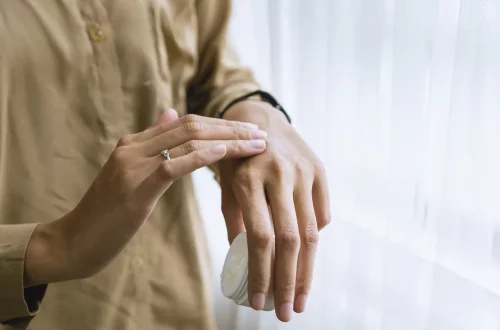
Understanding Filler Migration in Lip Enhancements
Lip enhancements have gained immense popularity in recent years, with many individuals seeking to enhance their natural beauty and achieve fuller, more youthful-looking lips. The use of dermal fillers, primarily hyaluronic acid-based products, has become the go-to method for achieving this aesthetic. However, as with any cosmetic procedure, there are various factors to consider, including the potential for filler migration. This phenomenon can occur when the filler material moves from the original injection site, leading to unexpected results. Understanding the intricacies of filler migration is crucial for both practitioners and clients, as it can significantly impact the overall satisfaction with the procedure.
The reasons behind filler migration can be multifaceted, including the type of filler used, the technique employed during injection, and individual anatomical variations. It is essential for patients to engage in thorough consultations with their practitioners, ensuring they are well-informed about the risks and benefits associated with lip enhancements. The desire for beautiful, plump lips should always be balanced with a clear understanding of the potential complications, one of which is filler migration. By delving into the specifics of this issue, individuals can make informed decisions about their cosmetic treatments and better manage their expectations.
What is Filler Migration?
Filler migration refers to the movement of injectable filler material from the original injection site to surrounding tissues. In the context of lip enhancements, this can result in an uneven appearance, causing the lips to look unnatural or overly voluminous in certain areas. While some degree of migration is expected, especially with hyaluronic acid fillers, excessive movement can lead to dissatisfaction and may require corrective measures.
Several factors contribute to filler migration. One of the primary considerations is the properties of the filler itself. Different formulations have varying levels of cohesiveness and elasticity, which can influence their stability once injected. For instance, softer fillers may be more prone to migration than firmer ones. Additionally, the technique used by the practitioner plays a pivotal role; improper injection depth or angle can lead to unwanted distribution of the filler material.
Another important aspect to consider is the individual’s anatomy. Each person’s lip structure and tissue composition are unique, which can affect how the filler behaves post-injection. Factors such as skin thickness, muscle movement, and even age can contribute to the way fillers settle. For example, younger individuals with more elastic skin may experience different outcomes compared to older clients with less skin elasticity.
In some cases, filler migration may not be immediately apparent. Patients might notice changes in their lip appearance days or even weeks after the procedure. This delayed reaction can lead to confusion and anxiety, particularly if the individual had high expectations for the results. Understanding that filler migration is a possibility helps set realistic expectations and encourages open communication between clients and practitioners.
Factors Influencing Filler Migration
Numerous factors can influence the likelihood of filler migration after lip enhancements. Understanding these elements can help both practitioners and clients better manage expectations and outcomes.
One of the most significant factors is the type of filler used. As mentioned earlier, hyaluronic acid fillers come in various formulations, each designed for specific applications. Some fillers have a higher viscosity, making them less likely to migrate, while others are formulated to be softer and more malleable. Clients should discuss with their practitioners which type of filler is best suited for their desired outcome, taking into account the potential for migration.
Injection technique is another critical factor. The skills and experience of the practitioner can greatly affect the results. An experienced injector will know how to place the filler accurately, minimizing the risk of migration. Techniques such as the linear threading or micro-droplet method can provide more controlled results, reducing the chance of the filler moving from the desired location.
Patient-specific factors also play a crucial role. Each individual has a unique anatomy, which can influence how the filler interacts with surrounding tissues. For example, individuals with more active facial muscles may experience a higher degree of migration due to the constant movement of the lips. Additionally, factors like skin thickness and collagen levels can affect how the filler settles and integrates with the tissue.
Post-treatment care is another essential consideration. Following the procedure, practitioners often provide specific aftercare instructions to minimize the risk of complications, including filler migration. Patients should adhere to these guidelines, which may include avoiding strenuous exercise, not massaging the lips, and steering clear of extreme temperatures for a certain period. Neglecting these instructions can increase the likelihood of migration and other unwanted side effects.
Managing and Preventing Filler Migration
While filler migration can be a concern, there are several strategies that both practitioners and clients can employ to manage and prevent this issue effectively.
Firstly, selecting a qualified and experienced practitioner is paramount. When considering lip enhancements, individuals should thoroughly research potential injectors, looking for reviews, before-and-after photos, and testimonials. A skilled practitioner will not only understand the science behind filler migration but will also be able to apply techniques that minimize this risk.
During the consultation phase, clear communication is essential. Clients should articulate their aesthetic goals and concerns, allowing the practitioner to recommend the most suitable fillers and techniques. This dialogue helps ensure that both parties are aligned and can contribute to a successful outcome.
Additionally, understanding the importance of proper aftercare cannot be overstated. Patients should follow all post-treatment instructions provided by their practitioners, as these guidelines are designed to optimize results and reduce the likelihood of complications. Avoiding activities that may disturb the filler, such as intense exercise or facial massages, can help maintain the desired appearance.
In cases where filler migration does occur, there are options for correction. Depending on the severity of the situation, practitioners may suggest using hyaluronidase, an enzyme that can dissolve hyaluronic acid fillers. This process can help restore the desired lip shape and alleviate any unwanted migration effects. However, it’s crucial for patients to consult with their injector before pursuing any corrective measures.
Finally, maintaining realistic expectations is vital. While the goal is to achieve beautiful, full lips, it’s essential to remember that every individual’s results will vary based on various factors. Embracing this understanding can lead to a more satisfying experience overall.
In conclusion, filler migration is a phenomenon that can occur during lip enhancements, influenced by a range of factors from the type of filler used to the injection technique and individual anatomy. By understanding these aspects and engaging in open dialogue with practitioners, clients can make informed decisions and better manage their expectations.
**Disclaimer**: This article is for informational purposes only and does not constitute medical advice. For any health-related concerns, always consult with a qualified healthcare professional.




